Many people don’t know how to transfer, separate, or move their electricity meter. Today, we will share with you the procedures and costs of installing, separating, and moving your electricity meter.
1 Procedures for Applying for a New Electricity Meter
 The documents required depend on the purpose of use.
The documents required depend on the purpose of use.
The documents and procedures for applying for a new electricity meter depend on the purpose of use and voltage level. Voltage levels are categorized into four types:
-
Low voltage: Electricity grid below 1000V
-
Medium voltage: Electricity grid above 1000V to 35kV
-
High voltage: Electricity grid above 35kV to 220kV
-
Ultra-high voltage: Electricity grid above 220kV
The following are the documents and procedures for residential and production electricity supply according to voltage levels and contract types.
Documents for Residential Electricity Supply
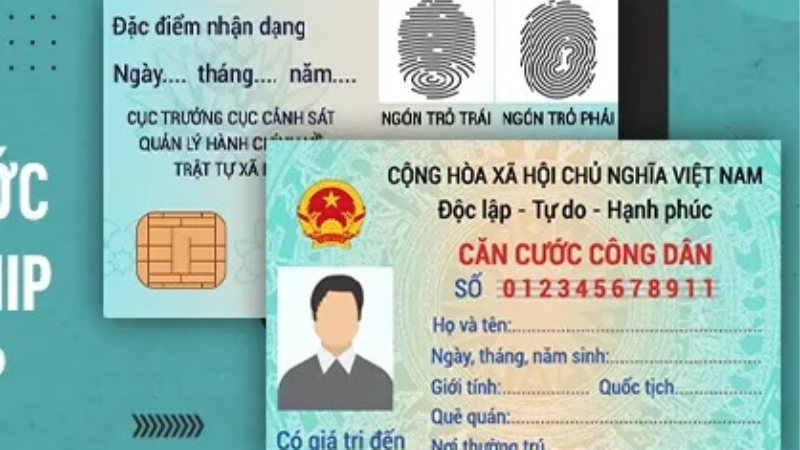 Citizen identification card
Citizen identification card
Residential electricity meters can be installed for three-phase or single-phase electricity from a shared or separate low-voltage grid. The documents required for a separate low-voltage residential electricity meter include:
Application form for an electricity meter, also known as a form for residential electricity supply, a form for a new electricity meter, etc. Download the form here.
Documents proving the location of electricity use: Notarized copy of one of the following documents with the original for verification:
- Residence book or temporary residence book
- House ownership certificate or purchase and sale contract, house allocation decision
- Land use right certificate, house ownership, and other assets attached to the land
- For a rented house, a lease agreement is required
Documents confirming the identity of the electricity user:
- ID card/Citizen identification card/Passport, Military officer ID, etc., for individuals.
- For organizations, documents confirming the legal representative of the organization and business registration certificate are needed.
For a shared three-phase or single-phase electricity meter from a low-voltage grid, the following should be noted:
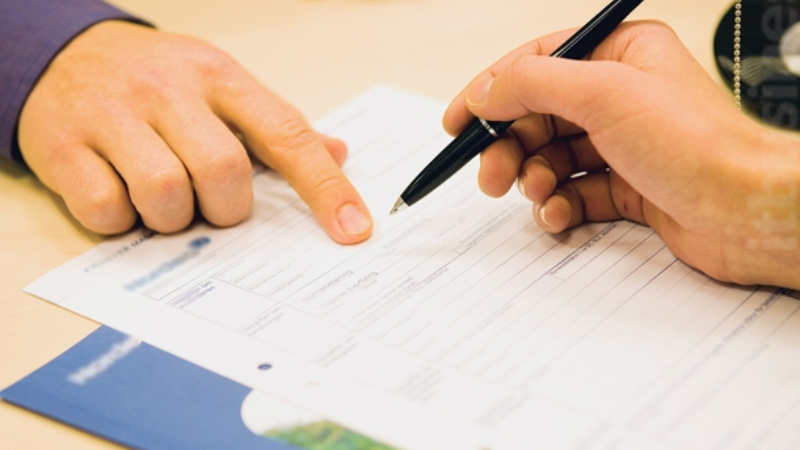 Authorization letter with signatures of all electricity users
Authorization letter with signatures of all electricity users
If the customer is a representative of a collective or residential area, the application for a new installation should include an authorization letter with signatures of all electricity users and be notarized or confirmed by the People’s Committee of the ward or commune where the electricity is to be registered.
The form for a shared electricity meter must have the signature of the representative of the families or be confirmed by the People’s Committee of the ward or commune where the electricity is registered.
Documents for Production Electricity Supply
Each electricity sales contract will have different documents depending on the electricity usage requirements as the contract includes both production and residential electricity sales.
To install a production electricity meter with a capacity of less than 40kW from a low-voltage grid, the following documents are required:
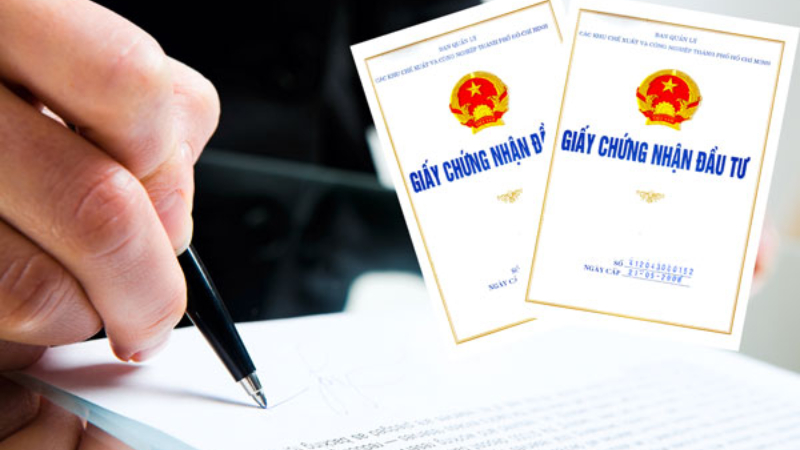 Investment registration certificate
Investment registration certificate
-
Application form for a production electricity meter. If you have a request letter for electricity purchase, the application form is not needed. The form can be found here.
-
List of electrical equipment, capacity, and usage mode.
-
Documents proving the location of electricity use, as mentioned in the new electricity meter installation procedure.
-
Notarized copy of one of the following documents: Business registration certificate, investment license, unit establishment decision, etc.
-
If the above documents are not available, confirmation from the local authorities or competent agency at the place of electricity registration is required.
Some notes on the documents for a production electricity meter with a capacity of more than 40kW from a low-voltage grid:
 Deposit for contract performance with a maximum of 15 days
Deposit for contract performance with a maximum of 15 days
-
Technical characteristics and load diagrams of electrical equipment used should be supplemented when registering for electricity purchase with a maximum capacity of 40kW or more, in addition to the documents for production electricity supply.
-
A deposit for contract performance with a maximum of 15 days based on the average monthly electricity consumption before the electricity sales contract takes effect if the electricity purchase is 1,000,000 kWh/month or more.
To install a short-term production electricity meter, customers need to prepare the following documents:
 Deposit for contract performance
Deposit for contract performance
-
Application or request letter for electricity purchase
-
Notarized or certified copy of one of the following documents: Decision or certificate of enterprise establishment. If these documents are not available, a confirmation letter from the competent authority or local authorities where the electricity is registered is required.
The short-term electricity sales contract will have a maximum term of 3 months, and when this term expires, the buyer must apply for an extension. In addition, customers need to make a deposit for contract performance of 1.5 months’ worth of electricity based on the average capacity or provide a bank guarantee.
If you sign an electricity sales contract from a medium-voltage grid or higher, you will need to apply for grid connection procedures. If you buy electricity in bulk with a large capacity, you must have an electricity business license.
Methods for Applying for a New Electricity Meter
If you need to install a new electricity meter, you can follow these two methods:
Method 1: Go to the power transaction office of your area to apply for a new electricity meter.
Method 2: Apply for a new separate electricity meter online.
The regulations on the documents and procedures for installing a new electricity meter vary depending on the electricity usage requirements.
Procedures for Installing a New Electricity Meter
After receiving the application for a new electricity meter, the electricity supplier will conduct surveys, collect fees, approve, determine the supply method, design and construct, and finally sign the electricity sales contract.
In general, customers only need to complete the procedures according to their electricity usage requirements, prepare the necessary documents, submit them to the local power authority, and pay the prescribed fees. The rest will be handled by the seller.
Procedures for Installing a Two-Way Electricity Meter
 Some provinces and cities offer free procedures for two-way electricity meters
Some provinces and cities offer free procedures for two-way electricity meters
Currently, there is a two-way electricity meter that measures the amount of solar energy produced and the amount of electricity sold to the power company. If solar energy production exceeds annual usage after monthly offset, EVN will purchase the excess at 2,086 VND/kWh.
Some provinces and cities offer free procedures for two-way electricity meters, including Ho Chi Minh City, Da Nang, Dong Thap, and Can Tho. In places like Kien Giang, Binh Duong, and Buon Ma Thuot, there is a fee. You can apply for a two-way electricity meter if you use a solar power system to optimize your benefits.
Regulations on the Time Limit for Electricity Supply and New Electricity Meter Installation
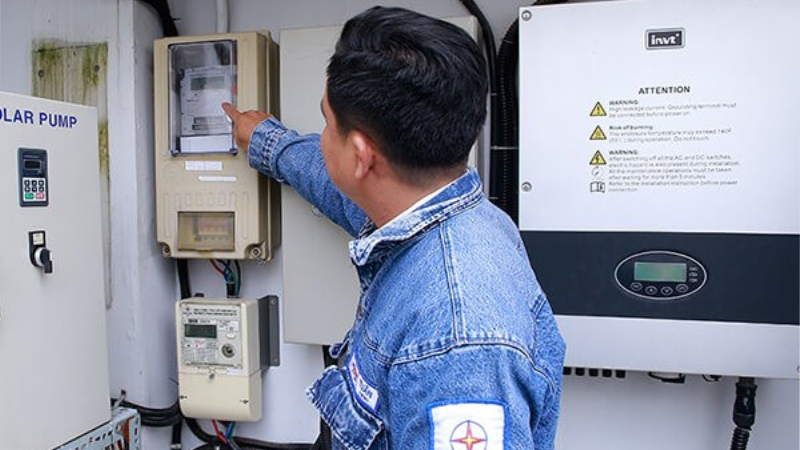 The time limit for electricity meter installation depends on the type of application
The time limit for electricity meter installation depends on the type of application
The time limit for electricity meter installation depends on the purpose of use, whether it is for residential or production use, and the type of electricity meter (single-phase or three-phase).
- The procedure for installing a new electricity meter for residential use (single-phase or three-phase) and production use (single-phase) has a time limit of 7 working days from the date of meeting the conditions for the application and documents.
- For the procedure for installing a three-phase electricity meter for production use, the time limit is 10 days from the date of meeting the conditions and the voltage level is not overloaded.
If the customer’s documents are complete but there is no distribution grid or it is overloaded, the seller will respond within 5 working days.
Sample electricity sales contract for residential and production use
Cost of Installing a New Electricity Meter
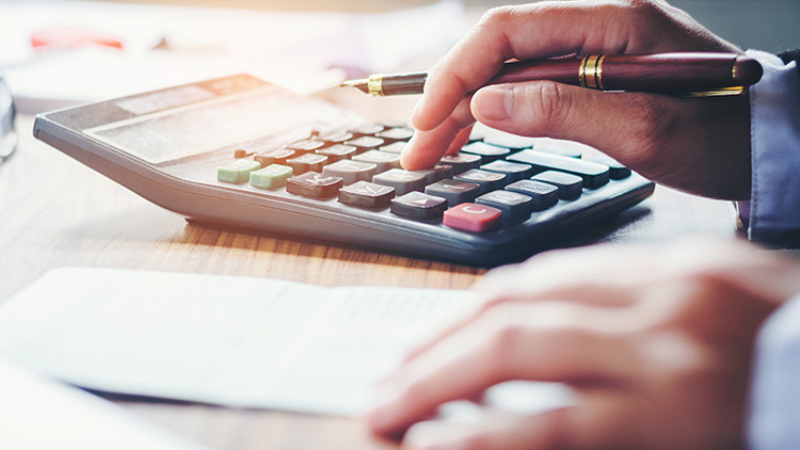 Cost of installing a new electricity meter
Cost of installing a new electricity meter
The costs may be borne by the seller or the buyer.
Cost of installing a new electricity meter borne by the seller:
- Electricity meter price: Protective devices after the meter, such as the meter box, fuses, etc.
- Cost of accessories for hanging the electricity meter, wires, etc.
- Installation labor cost
- Taxes and other costs as prescribed
Cost of installing a new electricity meter borne by the buyer:
- Installation cost of the electricity meter: Installation labor, materials except for the circuit breaker or fuse after the meter
- Taxes and other costs as prescribed
2 Procedures for Separating an Electricity Meter
 Full payment according to the electricity sales contract
Full payment according to the electricity sales contract
To serve the need for separating an electricity meter, customers need to prepare the following documents:
- An application form for separating an electricity meter, also known as a request form for separating or adding an electricity meter
- Notarized copy of the household registration book of the separating household
- Form confirming full payment according to the electricity sales contract in use or a commitment to pay off the debt
3 Procedures for Changing the Name on the Electricity Meter
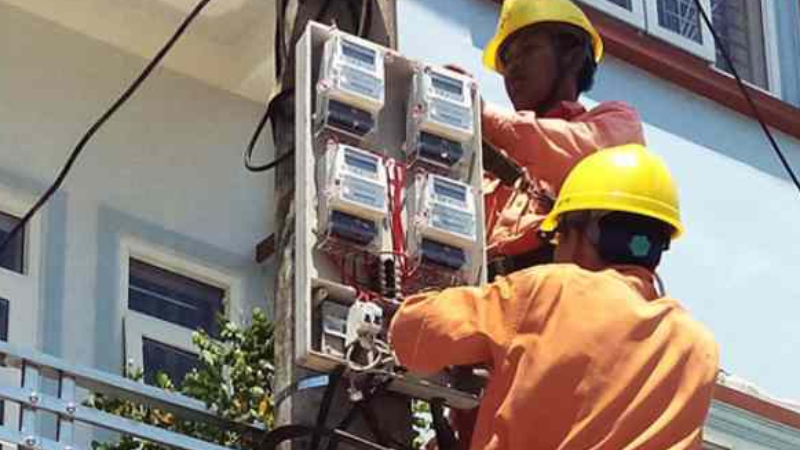 Electrician installing an electricity meter
Electrician installing an electricity meter
During use,
The Ultimate Guide to Car Registration: Unraveling the Latest 2022 Process
The process of registering a car in Vietnam has just gotten a whole lot smoother. With the latest 2022 regulations, you can now streamline the entire procedure, from preparing the necessary documents to paying the tax fees, with ease. This step-by-step guide will take you through both the traditional and online registration processes, ensuring you’re road-ready in no time.






































